11 Valuable Antique Mirrors That Reflect Serious Style
Antique mirrors are more than just decorative objects. They are reflections of history. With their detailed craftsmanship, they bring character and personality to any room. Adding one to your home can instantly create a focal point while capturing a sense of timelessness. These mirrors not only enhance the look of a space but also serve as conversation starters. They are the perfect blend of function and style, offering both beauty and utility.
This post may contain affiliate links, which helps keep this content free. Please read our disclosure for more info.
Queen Anne Walnut Veneer Mirrors
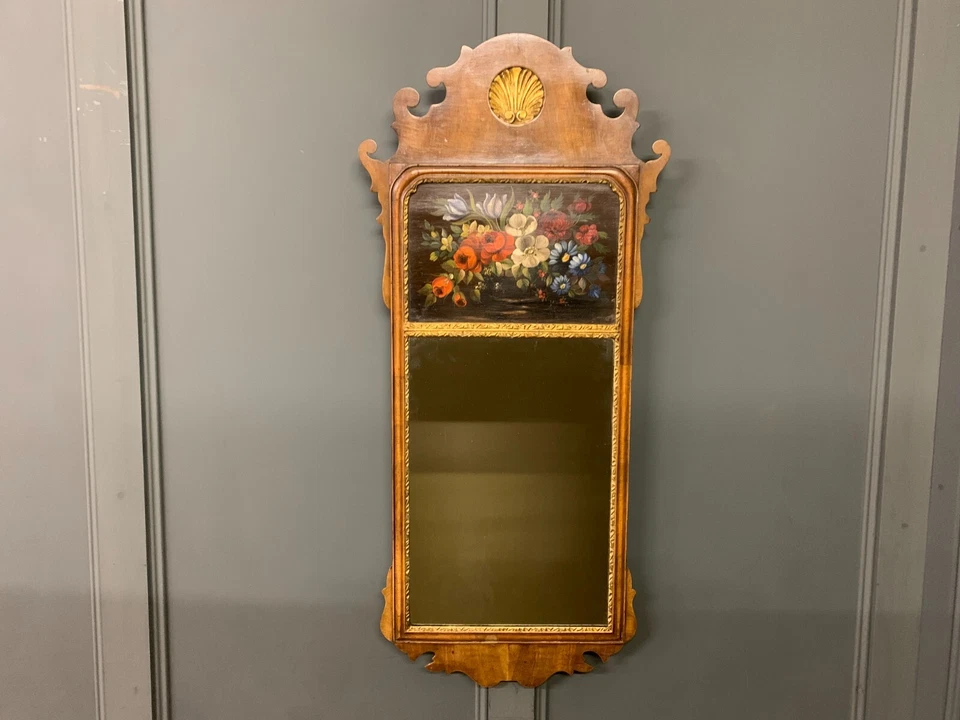
The Queen Anne style mirrors were primarily produced between the early 18th century and the mid-1700s. These mirrors are known for their graceful curves, with walnut veneer applied to the frame for a rich, deep finish. The frame often features intricate carvings or subtle details that highlight the natural beauty of the wood. The reflective surface typically uses glass with a wood backing, enhancing its durability. The estimated market value for a well-preserved Queen Anne walnut veneer mirror ranges from $1,000 to $4,000, depending on its condition and craftsmanship.
These mirrors were a staple in many English and American homes, reflecting the tastes of the era. The Queen Anne style embraces asymmetry, with soft, flowing lines that make the mirrors both functional and decorative. Many examples are framed with carved scrollwork, shells, and leaves, which add visual interest. Today, these mirrors are highly sought after by collectors, especially those in good condition or with original features. As a result, they retain significant value, making them an excellent investment.
Regency Convex Bullseye Mirrors
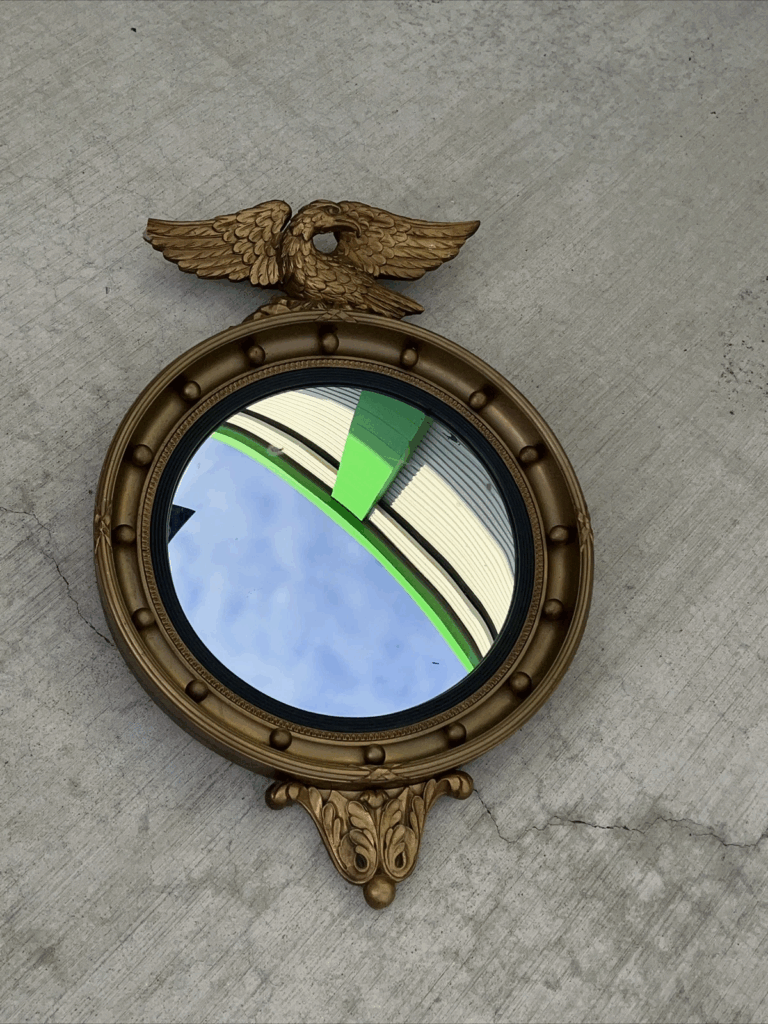
Regency convex bullseye mirrors became popular during the Regency period in the early 19th century, particularly in England. They are characterized by their convex glass in the center, creating a distortion that amplifies the surrounding frame’s design. The mirrors typically feature gilded or painted wood frames with ornate detailing like scrolls, urns, or laurel wreaths. Bullseye mirrors were often used in parlors and entryways, offering a distinct focal point. The market value of these mirrors ranges from $1,500 to $5,000, depending on age and quality.
These mirrors have an elegant and timeless appeal, making them highly collectible. The convex glass allows a wide-angle reflection, often giving the illusion of a larger room. The gilding on the frame can be either gold leaf or painted, contributing to its grandeur. These mirrors are most commonly found in pristine condition, having been preserved well over time. The Regency period’s influence is evident in the intricate patterns and the luxurious finish that still attracts collectors.
Chippendale Looking Glasses
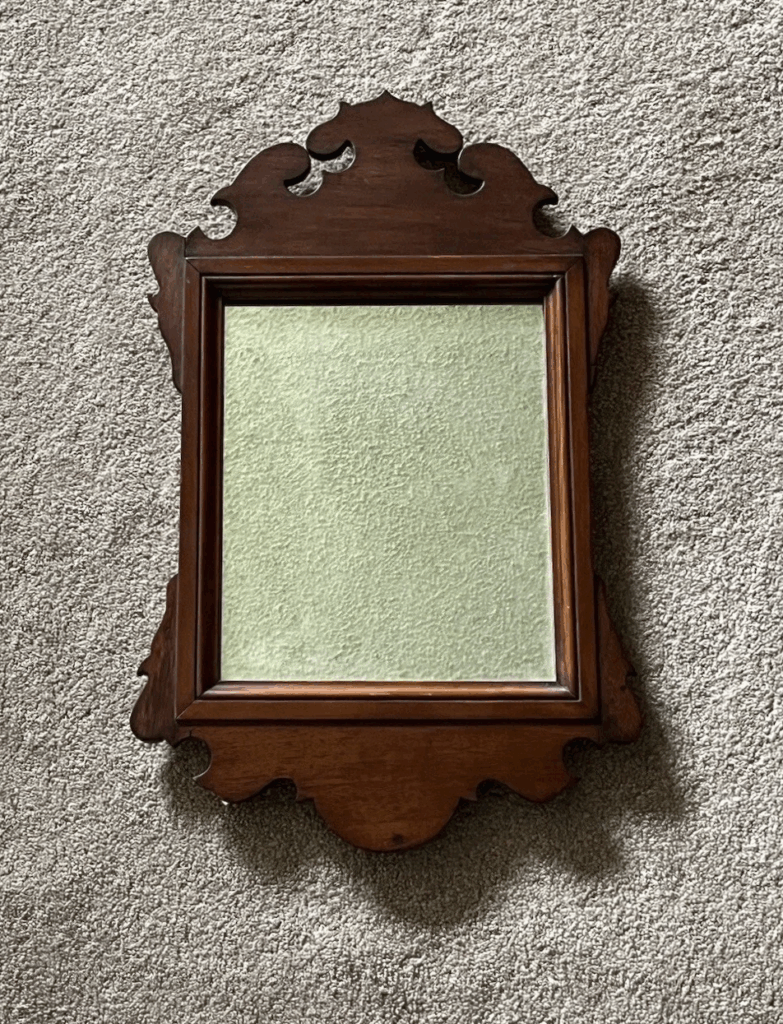
Chippendale mirrors, which were produced in the mid-to-late 1700s, are known for their distinct design and craftsmanship. They are typically characterized by elaborate wooden frames that include intricate carvings such as acanthus leaves, shells, and scrollwork. Chippendale mirrors often have a deep, dark finish, using mahogany or walnut wood for a sophisticated appearance. The design focuses on symmetry, with elegant curves and sharp angles that reflect the neoclassical style. Depending on age and condition, a Chippendale looking glass may be valued between $2,500 and $10,000.
These mirrors reflect the influence of Thomas Chippendale, a renowned furniture designer whose work emphasized intricate detailing and quality craftsmanship. The frames often feature motifs inspired by Chinese, Gothic, and Rococo styles, demonstrating the eclectic nature of Chippendale’s designs. The glass was traditionally set in wooden backing, providing a sturdy frame for the delicate mirror. Chippendale mirrors remain highly prized by antique collectors for their historical significance and artistic value. Their value is influenced by rarity, condition, and provenance.
Venetian Murano Glass Mirrors
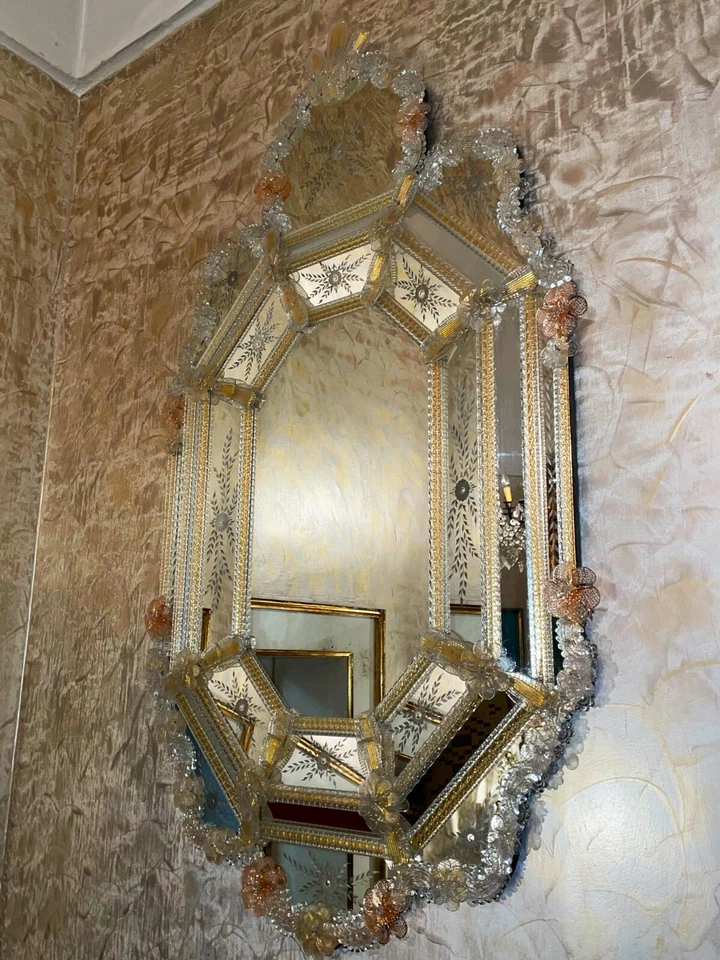
Venetian Murano glass mirrors originated in Venice, Italy, during the 16th century and were known for their unique craftsmanship and glasswork. The mirrors are distinguished by their beautifully ornate frames made from Murano glass, which is handcrafted and often adorned with delicate floral or geometric patterns. The glasswork includes a combination of etched, colored, and clear glass, sometimes with gold leaf accents to add an extra layer of luxury. Murano glass mirrors were typically produced for noble families, making them rare and highly collectible. Today, these mirrors are valued at $3,000 to $15,000 or more, depending on their design and age.
Murano glass is famous for its vibrant colors and intricate detailing, with each piece reflecting the skills of master glassmakers. The mirrors’ frames often showcase the craftsmanship of Venetian artisans, combining elegance with artistic flair. The mirrors’ reflective surfaces were made using fine-quality glass, ensuring a clear reflection. The elaborate frames and delicate detailing make these mirrors stand out, and their historical background adds to their appeal. Venetian Murano glass mirrors are considered treasures of Italian art, attracting high demand from collectors.
Federal Eagle-Crested Mirrors
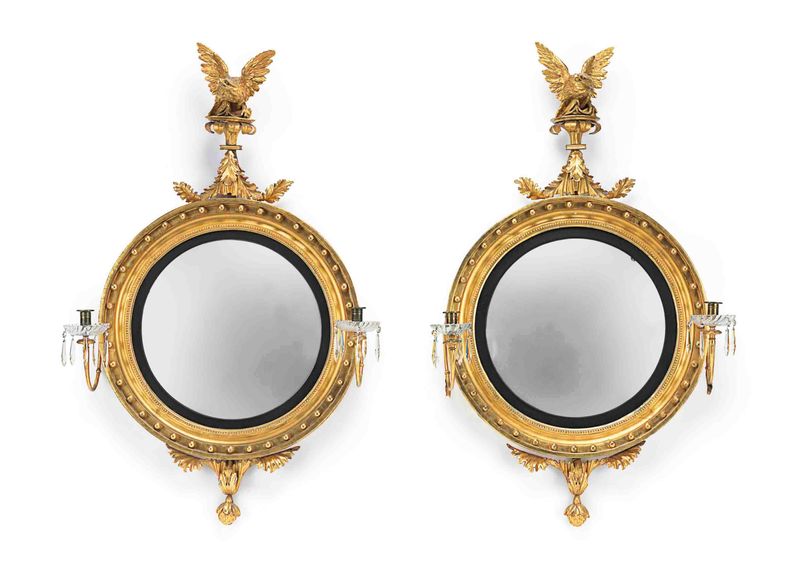
Federal eagle-crested mirrors were made in the United States during the early 19th century, reflecting the neoclassical style that was popular at the time. These mirrors feature an eagle motif at the top, often with wings spread wide, symbolizing freedom and national pride. The frames are usually made of wood, with a polished finish that highlights their clean, simple lines. The eagle crest is often gilded, giving the mirror a touch of elegance. These mirrors are generally valued between $2,000 and $7,000, depending on their age, condition, and provenance.
Federal mirrors are typically characterized by their straight lines and minimalistic design, offering a refined look. The eagle motif was popular during the post-Revolutionary War era, representing both the young American nation and classical ideals. These mirrors were often found in Federal-style homes, reflecting the period’s appreciation for symmetry and order. The eagle-crested mirror is a symbol of Americana, making it a cherished piece for collectors. Its historical significance and unique design make it an excellent addition to any collection.
Girandole Convex Mirrors
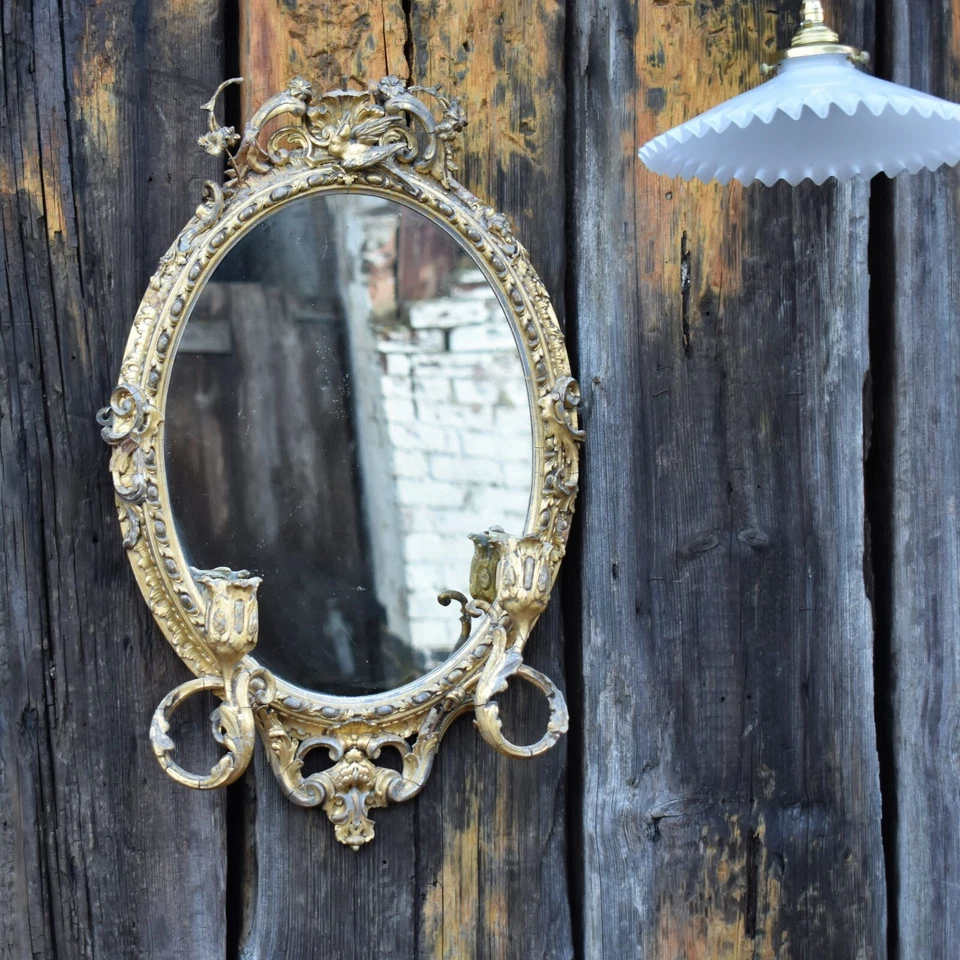
Girandole convex mirrors, which became popular during the 18th century, are known for their distinctive convex glass and ornate frames. These mirrors feature a convex shape that amplifies the reflection, making them ideal for use in larger rooms. The frames are often elaborately carved, with motifs such as flowers, acanthus leaves, and scrolls. These mirrors were originally designed to reflect candlelight and were often paired with candle holders, adding to their grandeur. The estimated market value for a Girandole convex mirror is around $2,500 to $7,000, depending on condition and design.
Girandole mirrors were common in both French and English interiors, especially in the Rococo and Georgian periods. Their convex design creates an interesting visual effect, distorting the reflection to create a unique and dramatic impact. The carved wooden frames are typically gilded, contributing to their luxurious appearance. These mirrors were often used as statement pieces in entryways and large drawing rooms, reflecting the sophistication of the era. Today, Girandole convex mirrors are highly collectible and remain a popular choice for antique enthusiasts.
Chinese Chippendale Pagoda Mirrors
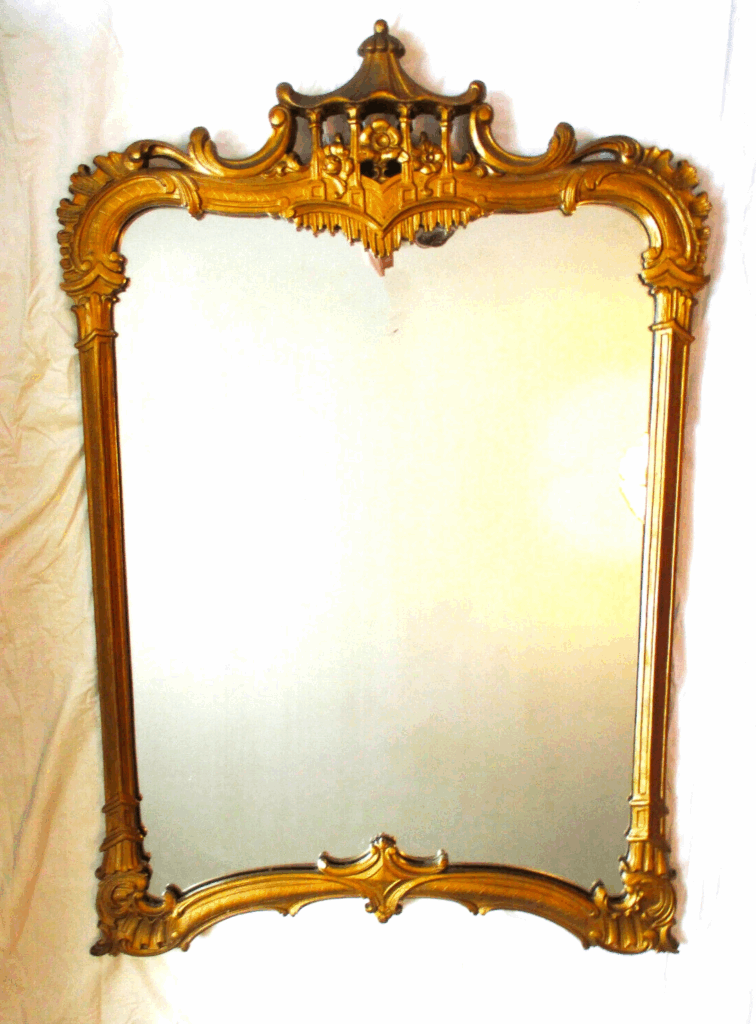
Chinese Chippendale pagoda mirrors were produced in the 18th and early 19th centuries, combining English Chippendale design with Chinese-inspired elements. These mirrors feature pagoda-shaped frames, often made of hardwood and finished in a rich lacquer or gilded tone. The decorative details on these mirrors, such as carved fretwork and intricate motifs, reflect a fusion of Eastern and Western design influences. They were initially crafted for export to Western markets, where the Chinese aesthetic was highly valued. The market value for a Chinese Chippendale pagoda mirror typically falls between $3,000 and $8,000.
These mirrors are a fine example of the exotic appeal of chinoiserie during the Rococo and Georgian periods. The pagoda design, along with its carved details, evokes a sense of elegance and cultural fusion. These mirrors were often placed in homes with a taste for the exotic, as they embodied both the sophistication of Chippendale and the intrigue of Chinese art. The frames are usually made from hardwoods like mahogany, which enhances their durability and beauty. The combination of fine craftsmanship and cultural influences makes them a valuable piece for collectors today.
Aesthetic Movement Sunflower Mirrors
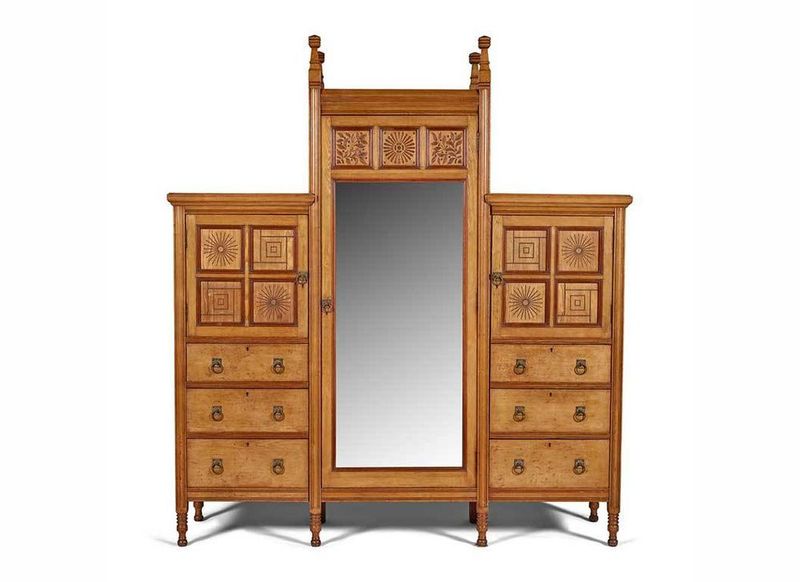
Sunflower mirrors, produced during the Aesthetic Movement in the late 19th century, are recognized for their bold floral motifs. The design prominently features a sunflower pattern, with the petals often radiating from a central, circular mirror. The frame is usually made from wood, sometimes adorned with gilt or bronze accents to highlight the design. These mirrors were produced to embody the movement’s focus on beauty and nature, offering both a decorative and symbolic element to interior design. The market value for an Aesthetic Movement sunflower mirror typically ranges from $1,500 to $6,000, depending on the quality of the craftsmanship.
The Aesthetic Movement emphasized the idea that art should be a part of everyday life, and these mirrors were a perfect reflection of that philosophy. The sunflower motif, often seen as a symbol of beauty and life, became a popular decorative feature in the late Victorian era. These mirrors are sought after for their vibrant, nature-inspired designs and are commonly found in both public and private collections. The combination of natural forms and ornamental details gives sunflower mirrors a unique, timeless appeal. Today, they continue to be highly prized by collectors of Victorian and Art Nouveau items.
Adam-Style Neoclassical Mirrors
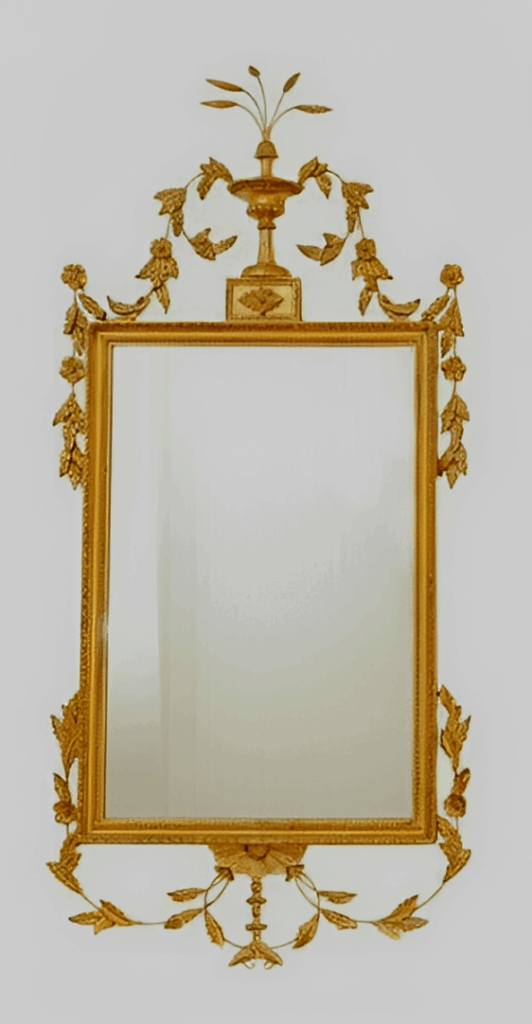
Adam-style neoclassical mirrors were crafted during the late 18th century, influenced by the design work of Robert Adam, a famous Scottish architect. These mirrors feature clean, symmetrical frames, often decorated with simple geometric patterns and classical motifs such as urns, garlands, and laurel wreaths. The wood used for the frames is typically light in tone, such as pine or walnut, and often finished with gilding or painted details. These mirrors are valued at $2,500 to $7,000, depending on condition and whether they retain their original elements.
The Adam style embraced neoclassical ideals, focusing on restrained elegance and classical inspiration. The clean lines and soft colors used in these mirrors reflect the preference for simple, graceful designs in contrast to the more elaborate Rococo style. These mirrors were popular in both English and American homes during the late Georgian period, fitting perfectly into the neoclassical interior design. Today, Adam-style neoclassical mirrors are highly sought after by collectors due to their historical significance and refined style. They remain a popular choice for those interested in classic, timeless design.
Art Deco Mirrors by Lalique
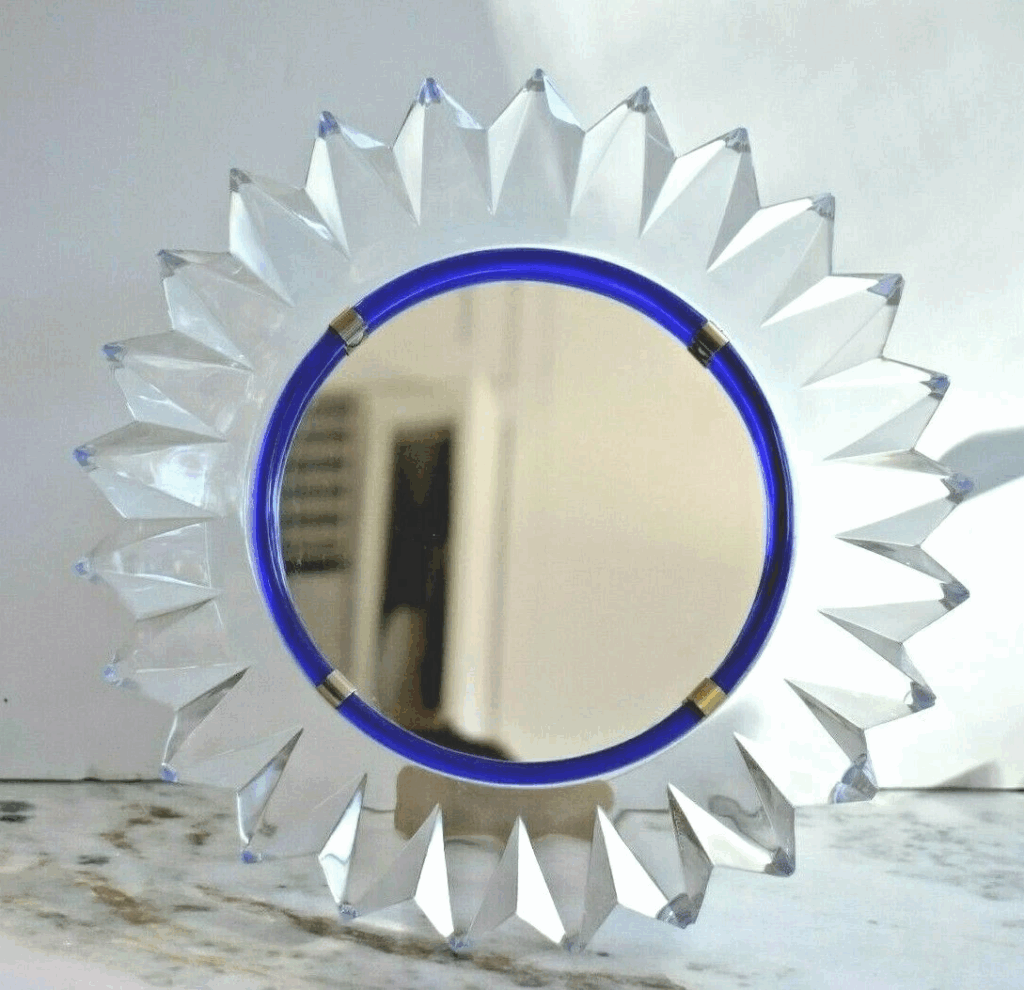
Art Deco mirrors by Lalique, produced in the early 20th century, are iconic examples of the movement’s luxurious and geometric design. These mirrors often feature etched glass with bold patterns, including stylized florals and geometric shapes, characteristic of the Art Deco style. Lalique’s glasswork is known for its intricate detailing and high-quality craftsmanship, making these mirrors highly sought after. The frames are often made of wood or metal, with the glass reflecting the clean lines and symmetry of the Art Deco period. The market value for Lalique Art Deco mirrors can range from $5,000 to $20,000, depending on the rarity and condition.
Lalique, a French artist known for his glass designs, played a significant role in the development of Art Deco glass. His mirrors feature both functionality and artistic beauty, with the glass etched to reflect light in a striking way. These mirrors are often considered works of art in their own right, combining style and craftsmanship. The combination of metal or wood with finely etched glass makes these mirrors an elegant addition to any room. Today, Lalique Art Deco mirrors are highly collectible and remain among the most desirable pieces of the period.
French Louis XV Gilt Mirrors
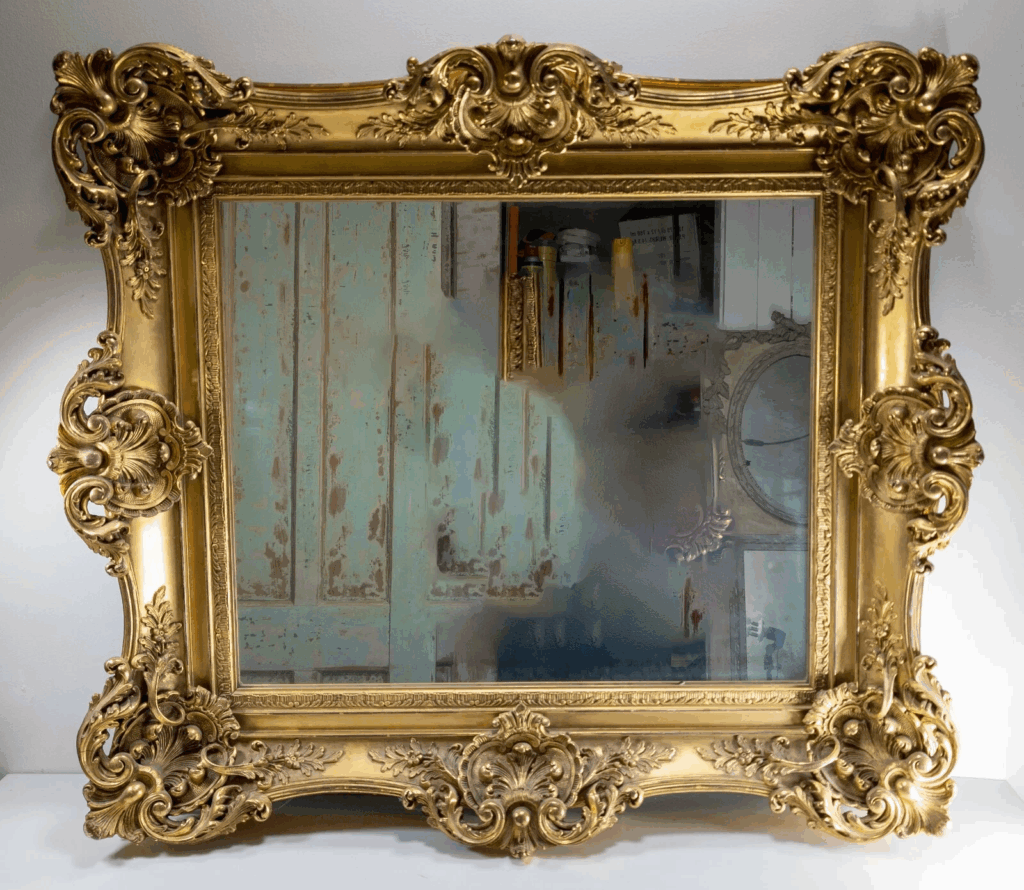
French Louis XV gilt mirrors were produced in the 18th century, during the reign of King Louis XV. These mirrors feature an ornate, rococo-style frame, often gilded with gold leaf or painted in rich tones to enhance their elegance. The frame is typically made from wood and is often adorned with intricate carvings, including floral designs, scrolls, and acanthus leaves. Louis XV mirrors are highly collectible, with prices ranging from $5,000 to $15,000, depending on the quality and condition.
These mirrors reflect the opulent, curvaceous design style of the Rococo period, emphasizing grace and fluidity in their frames. The gilding on the frame adds an extra layer of luxury, making the mirror a true statement piece in any room. The mirrors were originally designed for use in French palaces and aristocratic homes, adding grandeur to any space. Today, Louis XV gilt mirrors are still prized for their historical significance and stunning craftsmanship. They remain a symbol of French luxury and refinement, sought after by collectors of antique furniture.
Antique mirrors hold lasting value, not just in their craftsmanship but also in the character they add to any room. From intricate details to stunning designs, they have the power to transform a space. These mirrors combine history with artistry, making them highly desirable for collectors and design enthusiasts alike.
This article originally appeared on Avocadu.
